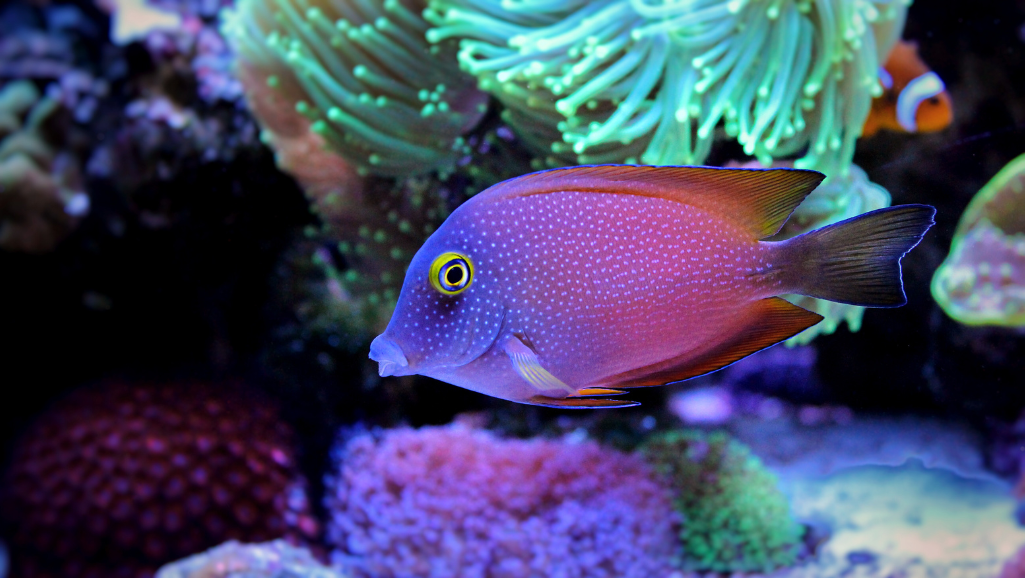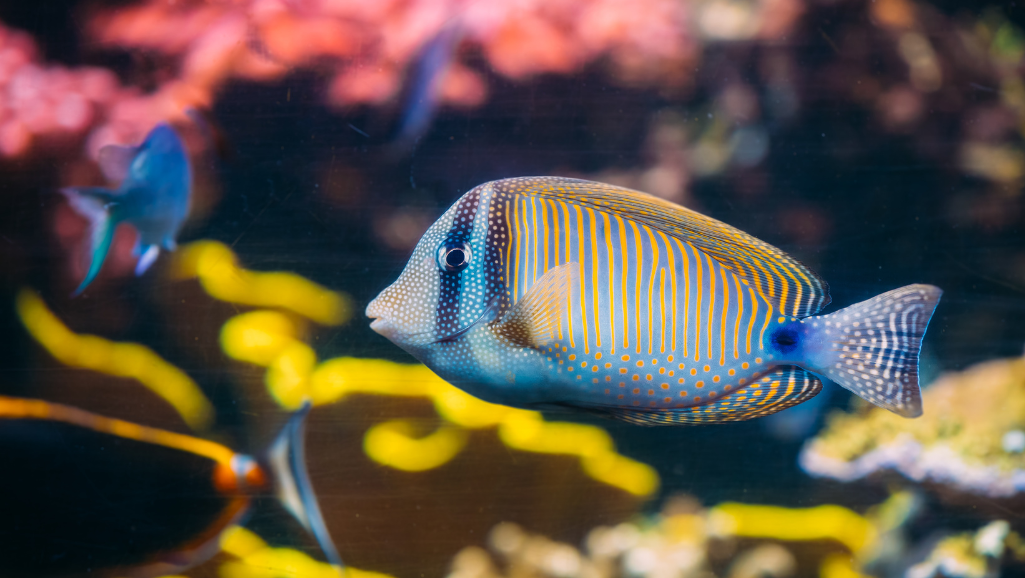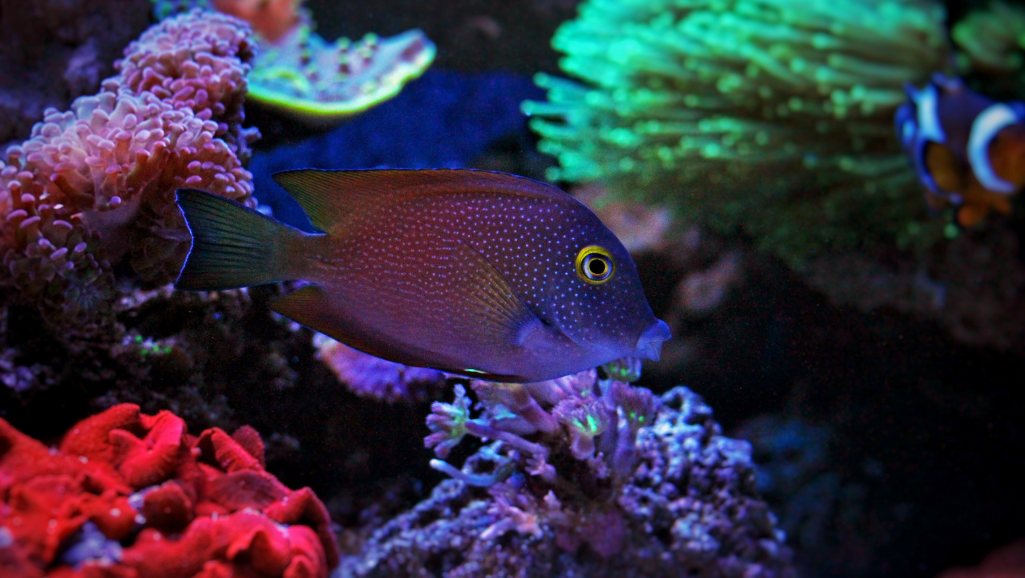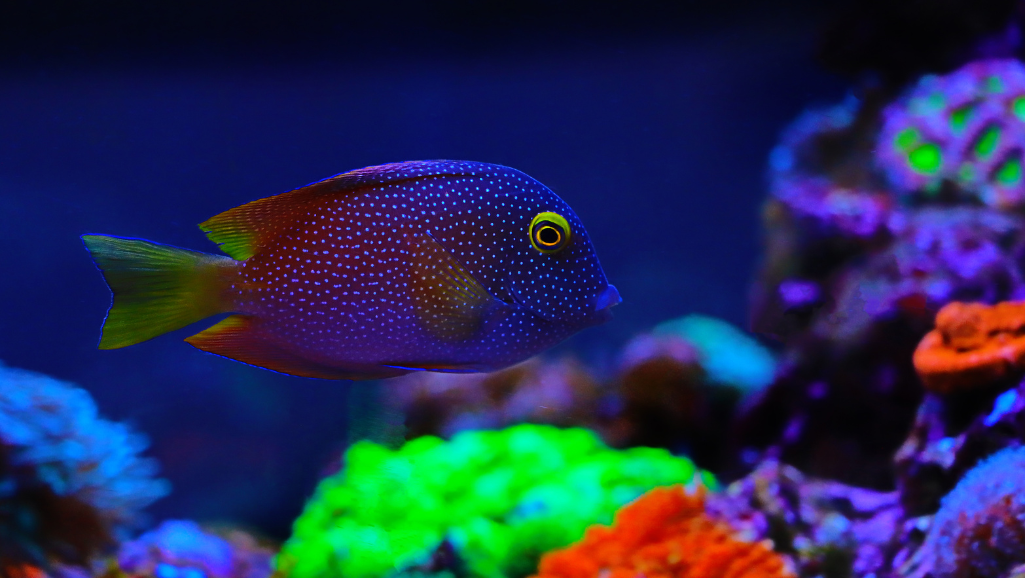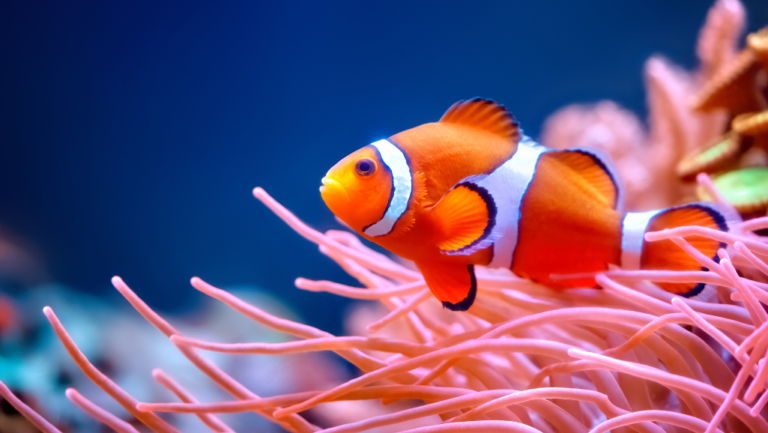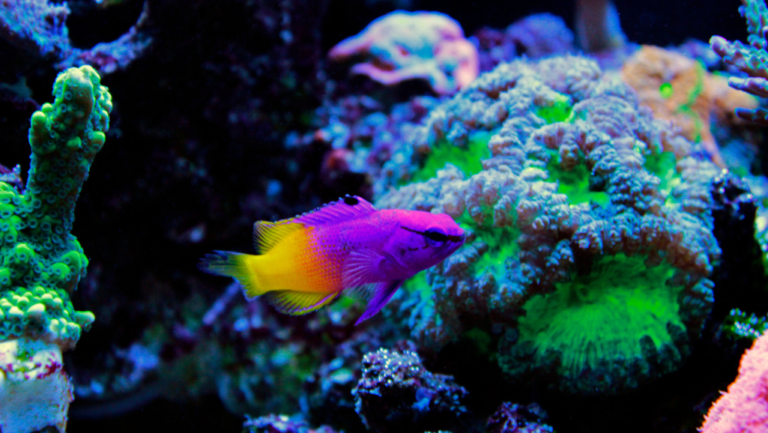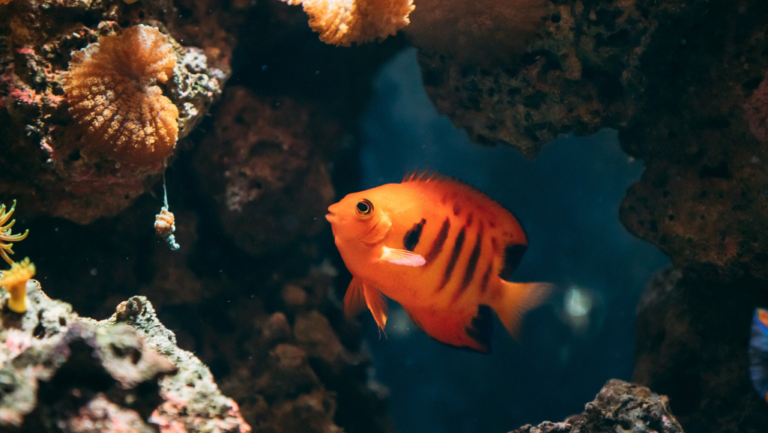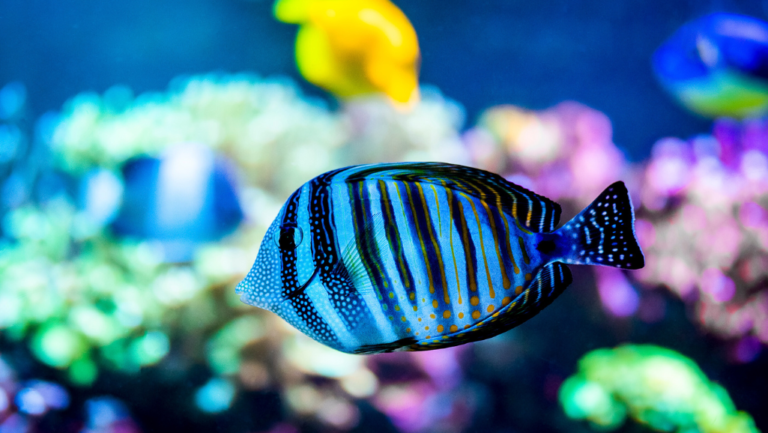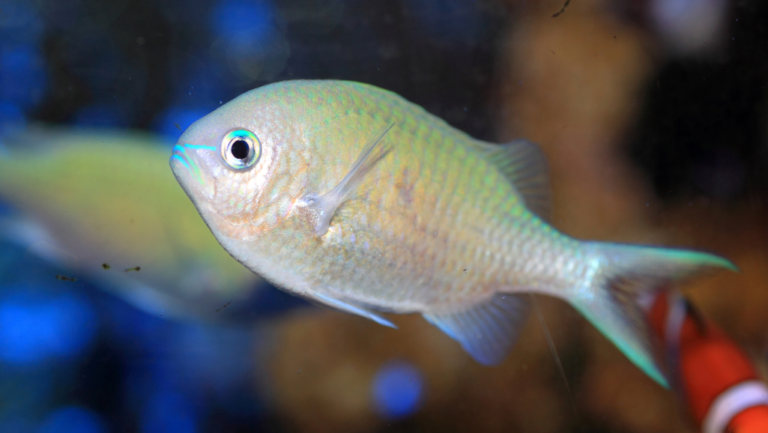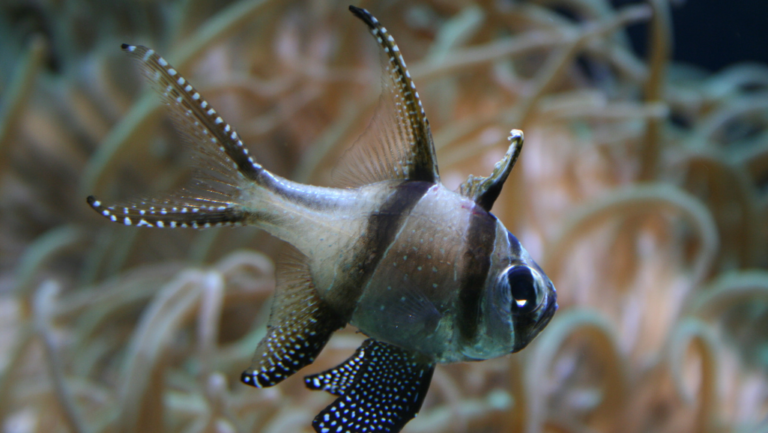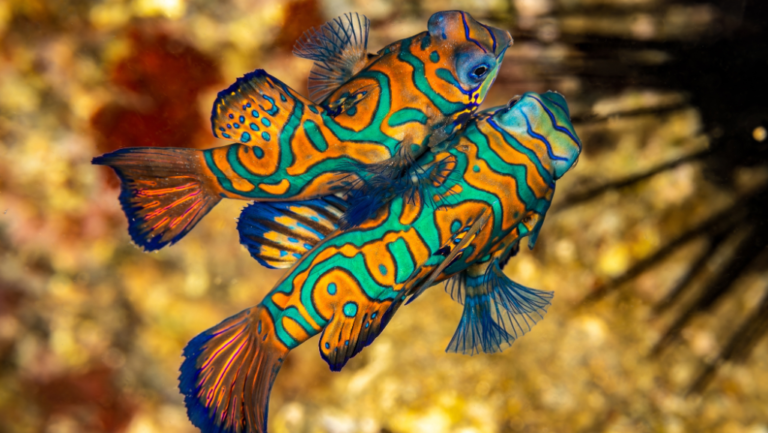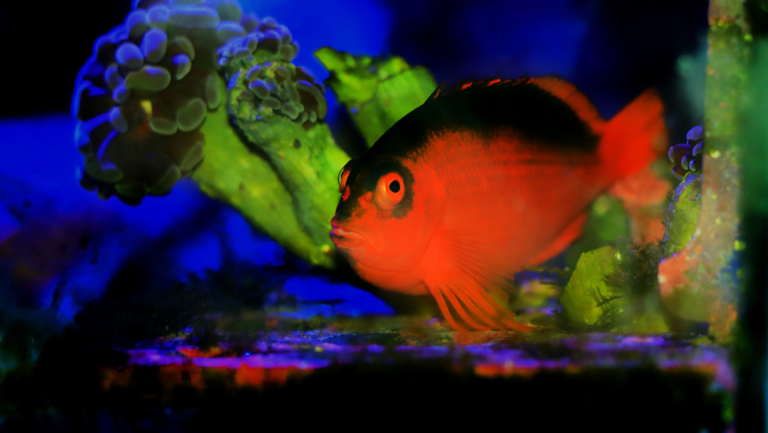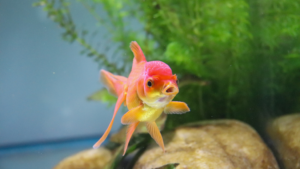Starting a Kole Tang journey, known as Ctenochaetus strigosus, needs a detailed plan for their health. These fish are a symbol of the Pacific Ocean’s beauty and a big responsibility. To keep them healthy, you must create a tank that mirrors their natural habitats in Hawaiian and Philippine waters.
Creating a suitable habitat is key. It should meet their needs, from coral dances to algae hunting. With the right care, these fish can live in your tank for 6 to 10 years. A good care guide is essential for their well-being.
Key Takeaways
- The average lifespan of a Kole Tang ranges from 6 to 10 years.
- A well-maintained Kole Tang habitat is essential for promoting health and longevity.
- Kole Tangs thrive in tank setups that mimic their natural environment, with a keen focus on water quality and space.
- A balanced diet rich in algae and vegetable matter is vital for Kole Tang nutrition.
- Careful observation for any signs of illness is critical for early detection and treatment.
- Engaging in responsible Kole Tang care is rewarding and contributes to the overall ecosystem of your aquarium.
- Investing in proper equipment and adhering to recommended parameters greatly enhances the success of keeping a Kole Tang.
Understanding the Kole Tang Species
The Kole Tang is a stunning marine fish with a purplish-brown color and blue accents. It’s a mix of beauty and toughness. Marine biologists and aquarium fans find them fascinating. Learning about their traits, home, and behavior gives us a peek into their world.
Basic Characteristics of Kole Tang
The Kole Tang, or Ctenochaetus strigosus, has a flat body up to 7 inches long. It has a yellow eye ring, making it stand out. Despite being small, they love to eat algae and plants. For more info, check out this Wikipedia article.
Origin and Natural Habitat
The Kole Tang comes from the Indo-Pacific, including Hawaii and the Central and South Pacific. They live in coral and rocky areas, where they can eat and hide from predators. They like depths of 1 to 113 meters.
Behavior and Social Structure
Knowing how Kole Tangs behave is key for aquarium owners. They are generally calm but can be territorial. It’s best to keep them alone to avoid stress. They show dominance when with other tangs, so choose tank mates carefully.
The Kole Tang is more than just a pretty fish for tanks. It needs a special environment to thrive. By creating a habitat like their natural one, we can enjoy their lively presence for years.
Ideal Aquarium Setup for Kole Tang
Setting up the perfect home for a Kole Tang requires careful planning. You need to understand their natural habitat and behaviors. A well-designed tank setup is key to their health and longevity.
Tank Size and Dimensions
Kole Tangs need a lot of space, so a tank of at least 75 gallons is a must. A tank of 180-200 gallons is even better. A longer tank, at least 6 feet, is also important. It lets them swim freely and graze as they like.
Essential Equipment and Decorations
For a healthy Kole Tang tank, you’ll need strong filtration systems. A good sump system, water heaters, and LED lighting are also essential. Decorations like live rock formations and substrates are important. They provide grazing areas and hiding spots.
Water Conditions and Parameters
Keeping the water just right is vital for Kole Tangs. They prefer a temperature of 75°F to 82°F. The pH should be between 8.1 and 8.4, and the water hardness should be 8-12 dKH. Specific gravity should be between 1.020 and 1.025.
For more on creating the best aquarium environment, check out AquaJoyLife. They offer detailed guides on setting up natural habitats for fish.
Pay close attention to the setup of your Kole Tang tank. It’s not just about keeping them healthy. It’s also about creating a beautiful underwater world to enjoy for years.
Feeding and Diet Requirements
To keep your Kole Tang healthy, it’s key to know their diet needs. Their Kole Tang diet should mix veggies and protein well. This mirrors their natural eating habits.
Nutritional Needs of Kole Tang
Kole Tangs love to eat plants, needing lots of veggies. They need nutrients to stay colorful and healthy. Adding spirulina, seaweed, and veggies like zucchini and spinach is good. A little protein from brine shrimp also helps.
Recommended Food Types
- High-quality marine-based flake and pellet food enriched with vitamins
- Fresh and dried seaweed for grazing throughout the day
- Frozen or fresh spirulina enhances their immune system
- Occasional meaty foods like brine shrimp and mysis shrimp (about 5-10% of their diet)
Feeding Schedule and Portion Control
Feeding Kole Tangs right is key. Adults need two meals a day, while young ones get three to four. Feed them just enough so they eat it in a few minutes. This keeps the water clean and prevents overfeeding.
Kole Tangs can adjust how much they eat based on what’s available. This is good for your tank, as it helps avoid water quality problems.
For more tips on keeping your tank clean and your Kole Tang healthy, check out Tiger Oscars. They have similar needs.
By following these feeding tips, your Kole Tang will not just survive but thrive. With the right care, they can live a long, happy life in your tank.
Health and Disease Prevention
Keeping Kole Tangs healthy requires careful attention and action. It’s important to know about Kole Tang compatibility, Common Possible Diseases & Prevention, and how to spot problems. This helps create a healthy home for your fish.
Common Health Issues in Kole Tang
Kole Tangs can get Marine Ich and Marine Velvet. These diseases show up as white spots and a dusty look on the fish. They are often managed by controlling the environment and catching them early.
Signs of Illness to Watch For
It’s key to spot illness signs early. Look for signs like being tired, eating less, looking dull, and breathing fast. These signs mean you need to act fast to keep your fish healthy.
Preventative Care and Treatment Options
To keep your fish healthy, quarantine new fish. This method has been shown to work well. Also, keep the water stable and feed them a balanced diet. If your fish gets sick, talk to a fish health expert. They can help with treatments and tank changes.
Creating a stress-free environment is also important. Make sure your fish have enough space and get along with each other. This helps avoid stress and aggression, which can harm your fish’s health.
While tools like UV sterilizers can help with parasites, they’re not a replacement for good water care and quarantine. Knowing how to prevent diseases helps keep your Kole Tangs healthy. It also makes your whole aquarium ecosystem better.
Breeding Kole Tang in Captivity
Breeding Kole Tangs in captivity is a complex task. It needs deep knowledge and precise conditions for success. We will look at the steps and standards for Kole Tang breeding. This will help enthusiastic aquarists in this challenging yet rewarding journey.
Breeding Conditions and Requirements
To start breeding Kole Tangs, a large and calm aquarium is key. Adult Kole Tangs need an aquarium of 70 to 90 gallons. This space is for swimming and grazing.
The water’s specific gravity should be between 1.019 and 1.026. Temperatures should be between 75 °F and 84 °F. This closely matches their natural habitat.
They thrive in clean, well-filtered water. Keeping the water clean is vital. A diet rich in marine algae and vegetables is also important. This improves their health and readiness for breeding.
Rearing the Offspring
Rearing the young Kole Tangs requires a controlled environment. Stable water conditions are essential to prevent stress. Stress can harm their development.
Young ones do well in groups at first. This reduces stress and supports natural growth. As they grow, they need more space to avoid territorial behaviors.
Feeding them regularly ensures they get enough nutrients. This prevents waste and keeps the water clean. Monitoring and adjusting their diet and environment as they grow is vital for their success.
Tips for Successful Breeding
- Dedicated Breeding Tank: Having a separate breeding tank helps control the environment. This increases the chances of successful breeding and rearing.
- Water Quality Management: Regularly test and adjust water parameters. This keeps them within the optimal range for adults and juveniles.
- Observation: Watch the behavior and health of the Kole Tangs closely. This helps address any issues quickly and prevents them from affecting breeding efforts.
By following these tips, aquarists can improve their chances of successful Kole Tang breeding. This not only helps preserve the species but also maintains ecological balance in captive marine systems.
Conclusion and Best Practices for Care
Keeping Kole Tangs healthy requires a proactive care approach. Their well-being depends on a tank that closely resembles their natural home. A detailed Kole Tang care guide highlights the need for large tanks and clean water. It also stresses the importance of a diet rich in vegetables and algae.
Summary of Key Care Tips
Several factors are key to Kole Tangs’ success in captivity. Avoiding overcrowding helps prevent Kole Disease and stress. Keeping water quality high and feeding them well can prevent health issues like head and lateral line erosion. Choosing the right tank mates is also vital to avoid aggression and promote peace.
Additional Resources for Kole Tang Keepers
For those serious about marine life, there are many resources available. They offer in-depth information on marine fish care. Learning about diseases specific to Kole Tangs can help spot and treat health problems early. A case study on a Yellow Eye Kole Tang shows the importance of proper tank conditions and nutrition.
Seeking advice from experienced keepers and specialized forums can be very helpful. It can lead to a vibrant and dynamic reef tank ecosystem.
Encouragement for Responsible Caregiving
Responsible care is essential for Kole Tangs to thrive. Following proper tank setup and health monitoring guidelines creates a sanctuary for them. This not only benefits the fish but also enhances the aquarist’s experience.


